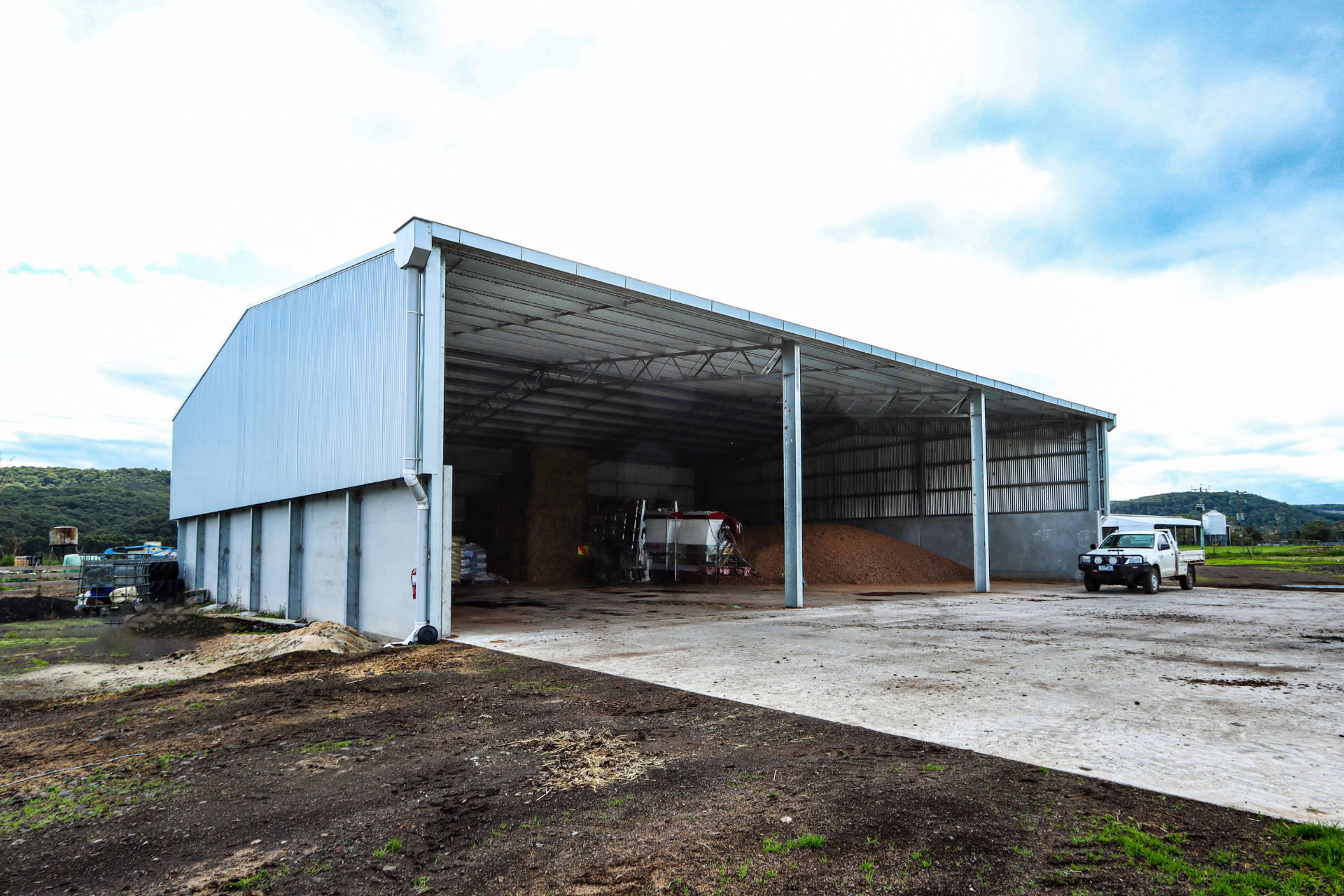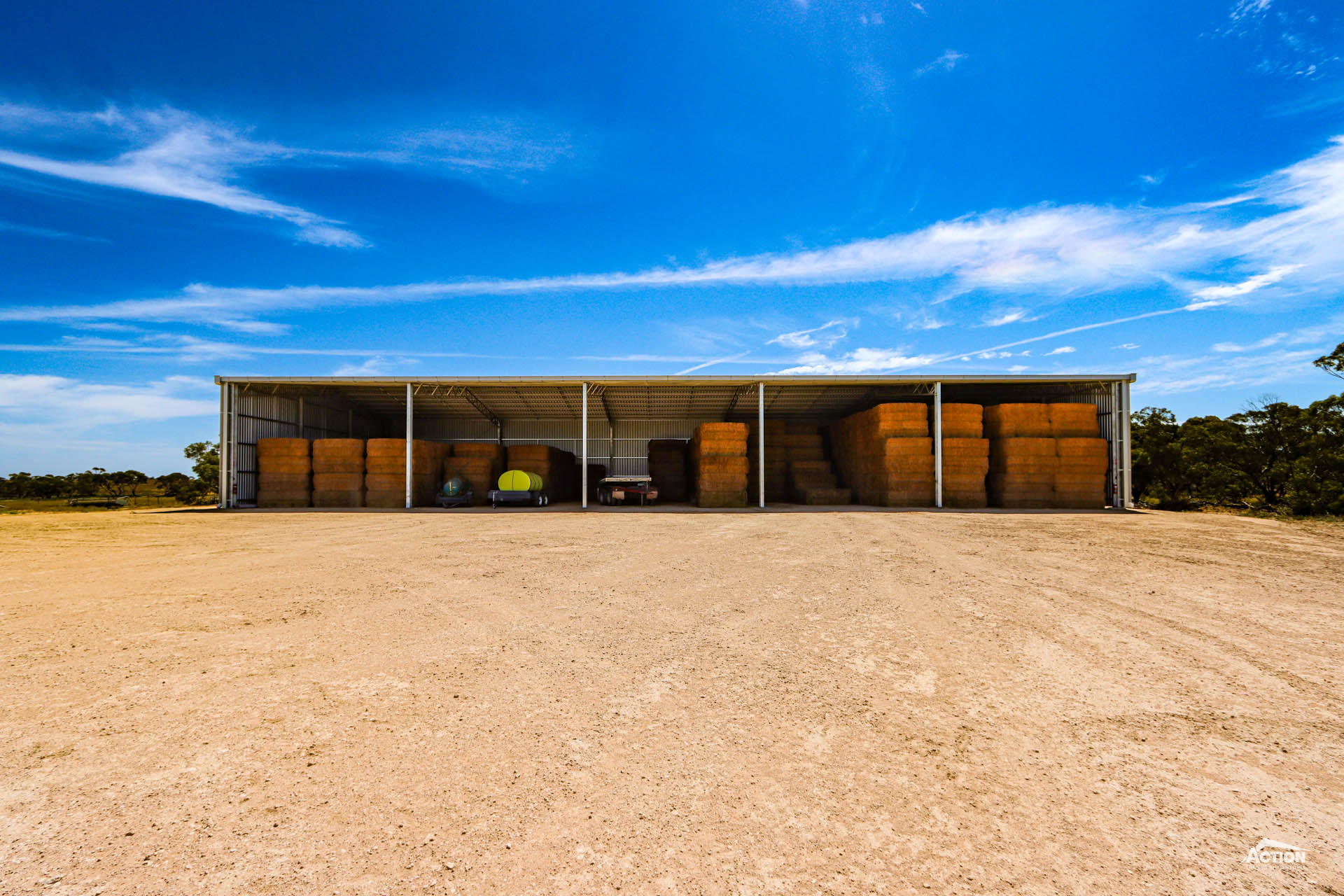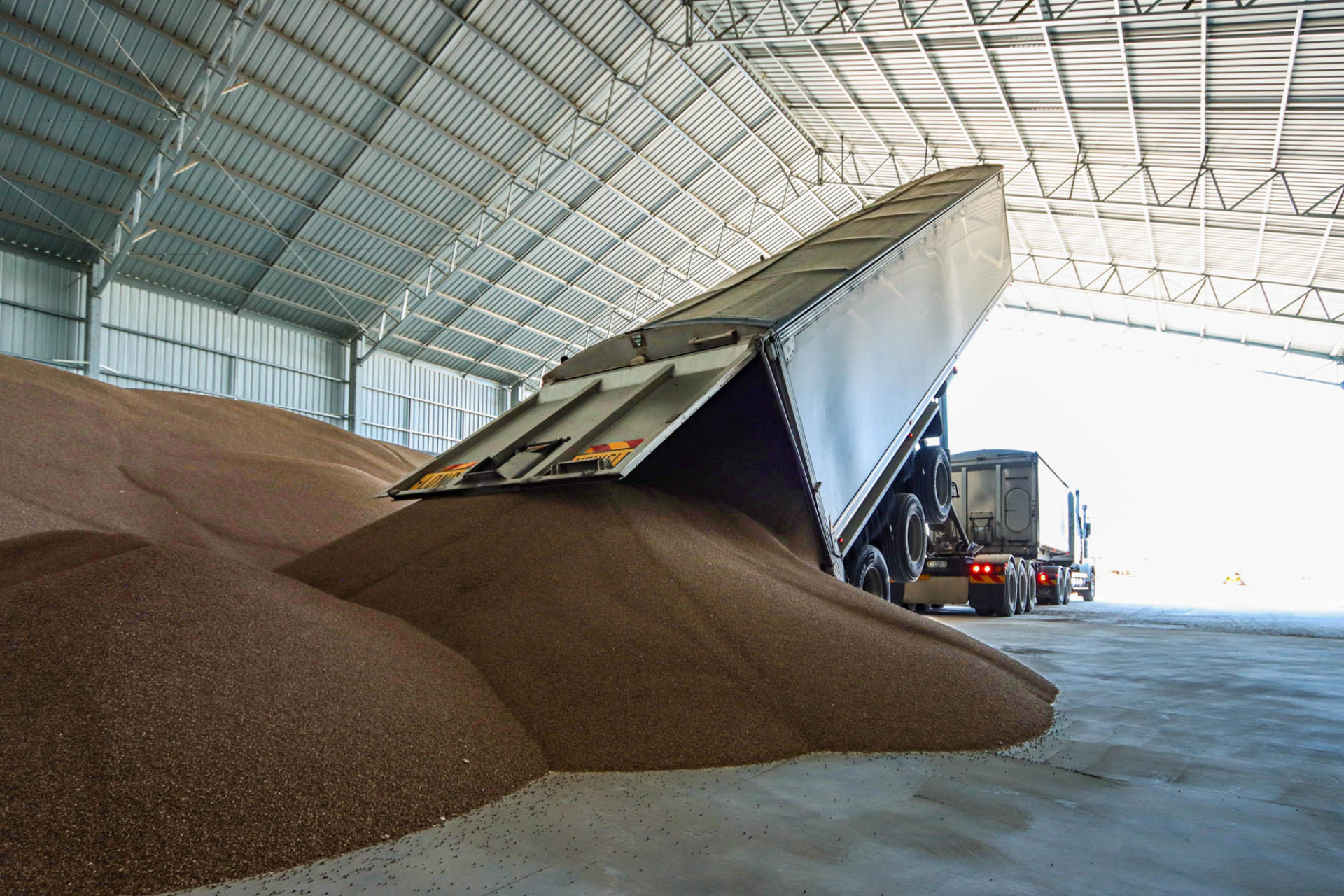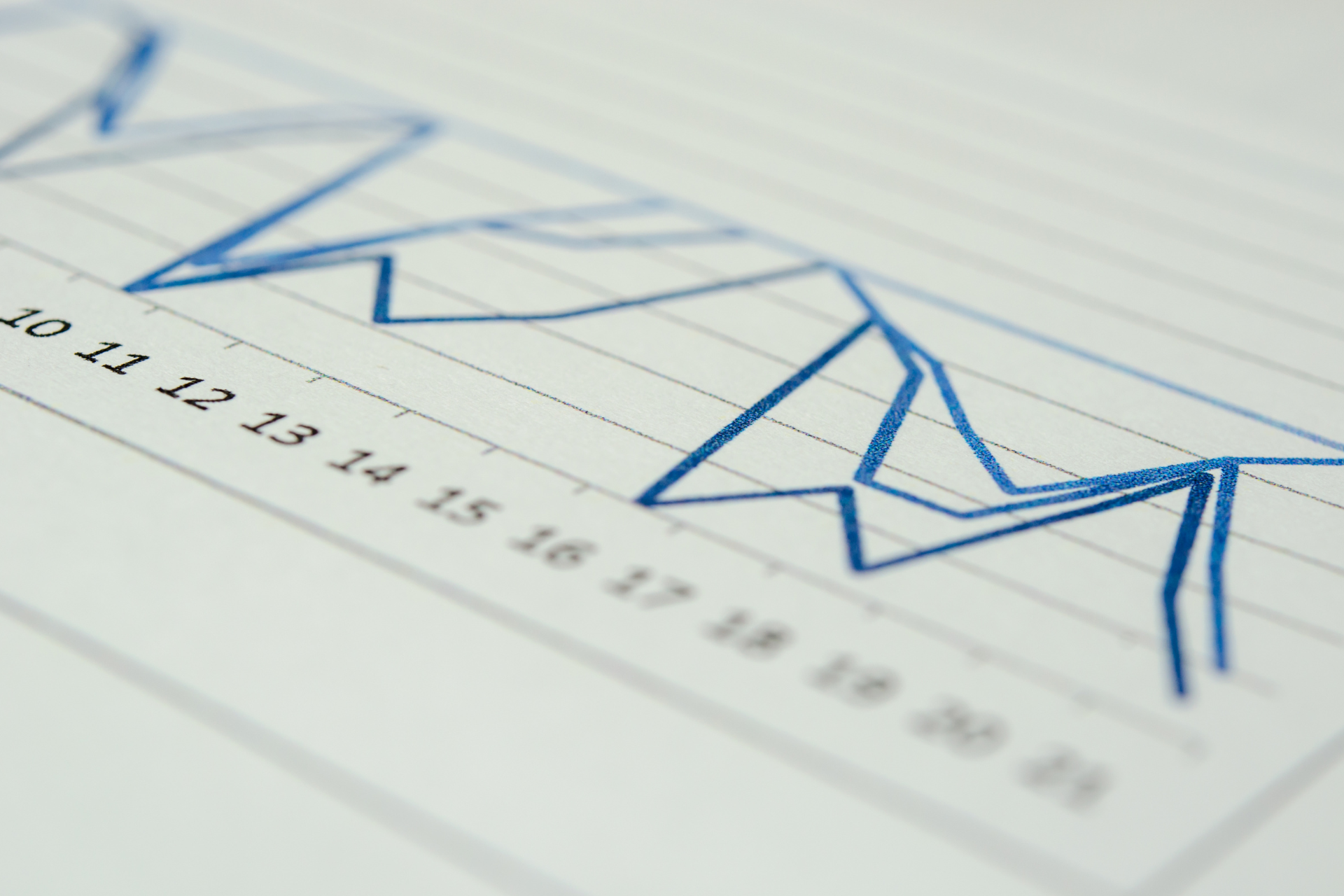Fertiliser storage sheds have been in high demand in 2022! This is largely due to fertiliser shortages along with delivery delays and volatile prices.
A dedicated bulk fertiliser storage shed is an excellent way to keep your valuable fertiliser protected. Secure long-term storage for your fertiliser also helps you avoid being held up by fertiliser shortages or delivery delays. And, with volatile fertiliser prices, it could save you money too!
Are you looking to build a new fertiliser shed on your farm? Wondering about the cost to build one?
A large custom-built fertiliser shed can be a significant investment. So, how much does it cost to build a fertiliser shed?
In this article, we discuss exactly that.
Keep reading to learn about current fertiliser shed prices.
Table of Contents
Firstly, we should mention that the smallest dedicated fertiliser storage shed that we manufacture stores around 400 tonnes. Obviously, not everyone requires this much capacity for their fertiliser storage.
If you only need to store a small amount of fertiliser, we recommend installing concrete walls in one or more bays of a multi-use storage shed. Just make sure to check your insurance policies to ensure you are covered for this. And maintain good storage hygiene to avoid contamination and reduce fire risk.
So, now let’s discuss fertiliser shed prices.
How Much Does It Cost To Build A Fertiliser Shed?
Fertiliser Storage Shed Prices
- An 18m x 12m x 6m fully-enclosed fertiliser shed costs approx. $135,000 – $170,000. Stores approx. 400 tonne.
- A 24m x 12m x 6m fully-enclosed fertiliser shed costs approx. $155,000 – $190,000. Stores approx. 600 tonne.
- An 18m x 15m x 6m fully-enclosed fertiliser shed costs approx. $155,000 – $190,000. Stores approx. 600 tonne.
- A 19.5m x 18m x 6m fully-enclosed fertiliser shed costs approx. $160,000 – $210,000. Stores approx. 1,000 tonne.
- A 32m x 18m x 6m fully-enclosed fertiliser shed costs approx. $215,000 – $270,000. Stores approx. 1,200 tonne.
We hope this fertiliser shed price list is a useful budgeting tool for your project. If you would like more accurate pricing, request an obligation-free quote.
Next up we discuss the main factors that influence the cost to build a fertiliser shed.
Factors That Influence The Price Of A Fertiliser Shed
Four main factors will influence how much you will pay for a fertiliser storage shed. These are: design, size, materials and customisation.
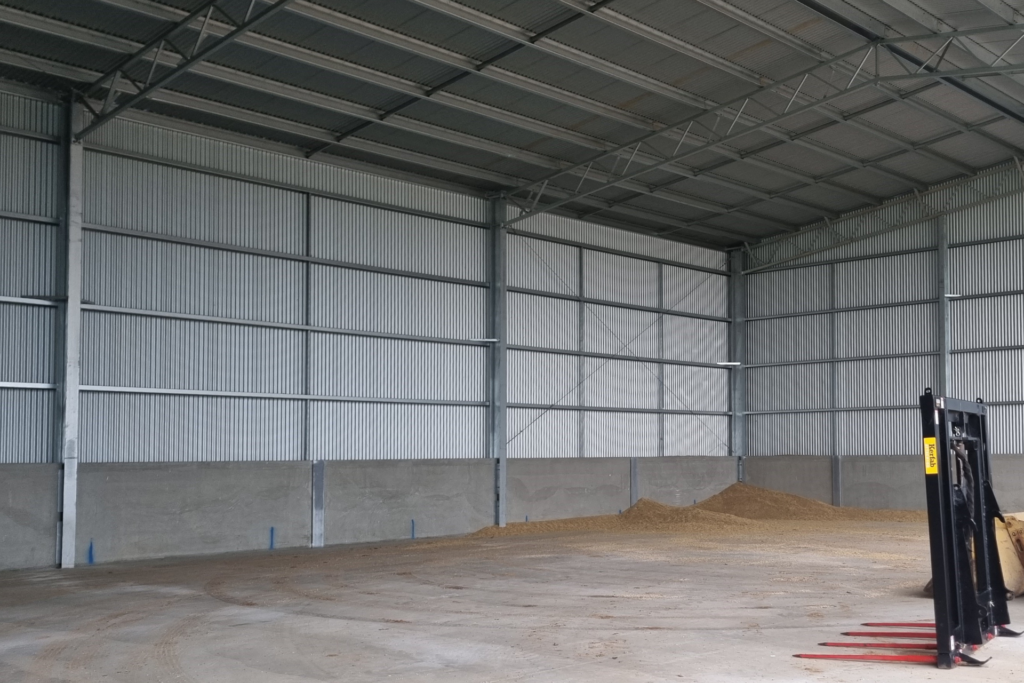
1. Design
The fertiliser shed design and configuration that you choose will impact the price of your shed.
A fully enclosed shed design with concrete panels is the most secure way to store granular fertiliser. However, it is more expensive than the alternative: just dedicating a few bays of your shed to fertiliser storage.
A fully-enclosed shed is the recommended shed configuration for fertiliser as it provides excellent weather protection. We wouldn’t suggest an open-sided configuration for fertiliser storage.
The majority of fully-enclosed fertiliser sheds we have built either have access from both gable ends or doors right along one side. This allows more than one type of fertiliser to be stored in the same shed, segregated by concrete panel dividing walls.
2. Size
Like most construction projects, the size of your fertiliser shed will directly impact the cost. This is simply because the bigger the shed, the more materials and labour that are required – therefore your project will cost more.
Having said that, like grain sheds, larger capacity fertiliser sheds are generally more cost-effective per tonne.
3. Materials
Materials are obviously essential to your fertiliser shed and they contribute significantly to the cost of your project. The main material costs to consider are the structural steel, the cladding, corrosion protection and concrete panels.
- Structural steel
All sheds built by Action are manufactured from Australian-made steel including heavy-duty UB columns and open web trusses. Therefore a rise or fall in steel prices can impact the cost to build your fertiliser storage shed.
Rest assured in the case of a steel price rise we negotiate with our suppliers and hold higher levels of stock to limit the impact on your project price.
Prices of other components such as purlin and cladding are also influence by the steel market.
You can learn about the steel price trends in 2023, here – Is The Price Of Steel Decreasing?
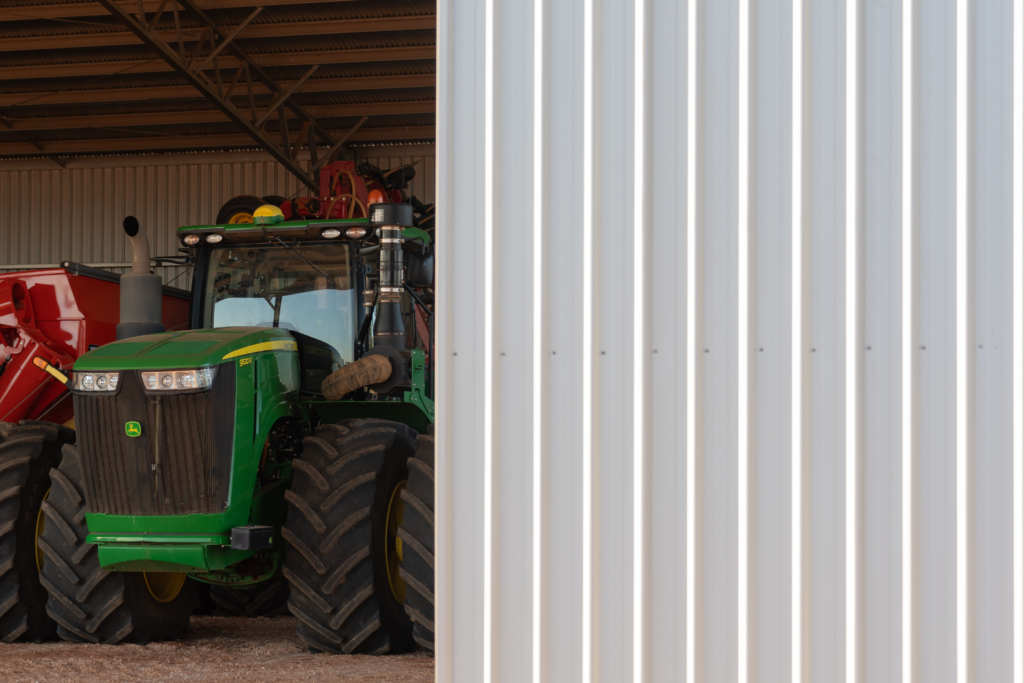
- Cladding
When it comes to cladding, we offer three options: galvanised cladding, zinc cladding and Colorbond cladding.
Zinc is the least expensive cladding option and is used for the majority of farm shed builds. However, if you are concerned about fertiliser coming into contact with the cladding you may want to consider using galvanised cladding or Colorbond cladding. This will provide additional corrosion protection.
Corrosion protection is essential for fertiliser sheds – which brings us to our next material cost.
- Corrosion protection
The most effective way to protect steel from corrosion and rust is hot-dip galvanising. It also usually has the highest initial cost compared to other coatings such as paint or pre-galvanising.
Every Action Steel shed is fully hot dip galvanised after manufacture (both columns and trusses). This means you can expect to pay more for an Action Steel fertiliser shed than a painted or pre-galv alternative.
It is worth noting that hot-dip galvanising has the lowest long-term cost though and we don’t recommend compromising on corrosion protection.
- Concrete panels
The other material cost to consider for fertiliser sheds is the cost of concrete panels. These are installed to protect the wall cladding from corrosion. Concrete panels can also be used to separate bays if segregation is a requirement for your shed.
Action Steel has the capabilities to manufacture the concrete panels for your shed. This is more cost-effective than engaging a third-party provider and means the team at Action looks after the complete project – from council permits through to construction.
4. Customisation

How Can I Save Money On My Fertiliser Shed?
If you are working to a budget for your fertiliser shed project, there are three main ways that you could save money on your build. These are shed design, shed size and shed builder.
1. Design
As we have already discussed, the most expensive (and secure) fertiliser shed design is a fully enclosed configuration with concrete panels. This is because a fully enclosed design requires more materials such as cladding and concrete panels and more design features such as ridge vents and sliding doors.
If you only intend to store small amounts of granular fertiliser it may not be worth building a dedicated fertiliser shed. Instead, one option is to include concrete panels in one or two bays of your machinery shed.
Remember to keep fertiliser and the machinery or produce stored in the shed separated to avoid fires and contamination, though. It would also pay to check that your insurance policy allows co-storing.
Consider your storage requirements when choosing a shed design rather than make a decision based purely on price. Read our article – What Is The Best Way To Store Fertiliser? – for more ideas and storage suggestions.
One advantage of a large dedicated fertiliser shed to keep in mind is its versatility. A large-scale fertiliser shed can easily be used as a grain storage shed or machinery shed when fertiliser storage is not a requirement. This makes the shed a cost-effective and versatile investment.
A large dedicated fertiliser shed is a cost-effective and versatile investment! When fertiliser storage is not a requirement the shed can easily be repurposed as a grain storage shed or machinery shed.
Action Steel Click to Tweet
The second way to save money on your project is to choose a standard size span.
2. Standard sizes
Our standard spans include a range of practical sizes including 18 metres, 21 metres, 24 metres, 27 metres and 30 metres. Using a standard size span helps ensure your shed design is cost-effective. This is because a new ‘non-standard’ truss jig does not have to be set up specifically for your project -saving both time and money!
3. Shed builder
Useful Resources
What Is The Required Concrete Slab Thickness? How Much Does A Concrete Slab Cost?
How Much Do Farm Shed Permits Cost?
Council permits will be an additional cost to your fertiliser storage shed project. So, how much can you expect to pay for permits?
In the video below, Lester discusses the average cost of permits and what will influence the price. Or read our article – How Much Do Farm Shed Permits Cost?
That’s a wrap on how much it costs to build a fertiliser shed! We hope you have found this article helpful!
For more articles like this one, check out our Learning Hub which also includes storage calculators and the latest farm shed brochures. Or to discuss your project, give us a call!


